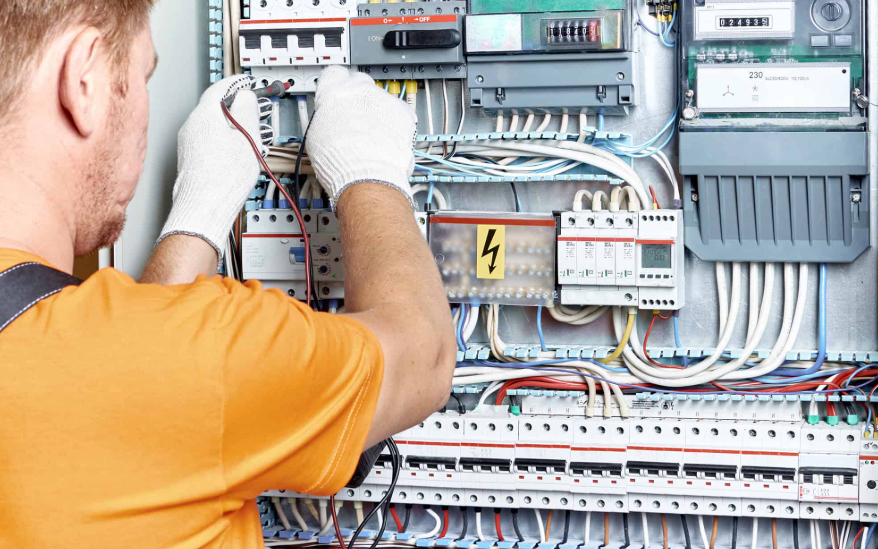How to Choose Between High, Medium, and Low Voltage

Understanding voltage levels is essential when designing, operating, or sourcing electrical systems. Whether you’re setting up industrial equipment, managing a power distribution network, or working with suppliers, choosing the right voltage type impacts efficiency, safety, and cost. To get a clearer understanding of the distinctions, the article on High vs Medium vs Low voltage provides an excellent foundation for exploring how each voltage range fits into modern electrical applications.
1. What Is Voltage and Why Does It Matter?
Voltage, often referred to as electrical potential difference, is the force that drives electrical current through a circuit. Think of it as the “pressure” that pushes electrons through wires. The higher the voltage, the greater the potential to transmit power over long distances—but also, the higher the safety risks and insulation requirements.
Different voltage levels are used for different purposes. For instance:
Low voltage (LV) powers residential and small commercial systems.
Medium voltage (MV) serves industrial facilities and local distribution.
High voltage (HV) is reserved for transmission over long distances.
Choosing the correct voltage ensures optimal performance, prevents energy loss, and reduces equipment wear.
2. Categories of Voltage Levels
Voltage levels are typically divided into three broad categories:
Low Voltage (LV)
Range: Up to 1,000 volts (1 kV)
Common Applications: Household wiring, lighting systems, office electronics, small machinery.
Advantages: Safe to handle, inexpensive installation, minimal insulation needs.
Limitations: Inefficient for transmitting large amounts of power over long distances due to energy loss.
Medium Voltage (MV)
Range: 1 kV to 35 kV (some regions extend this up to 69 kV)
Common Applications: Factories, commercial buildings, and regional power distribution.
Advantages: Balances efficiency and safety; suitable for moderate power transmission.
Limitations: Requires trained personnel for handling and specific insulation standards.
High Voltage (HV)
Range: Above 35 kV (can go into hundreds of kilovolts)
Common Applications: Power transmission lines, substations, industrial equipment.
Advantages: Ideal for long-distance energy transmission with minimal power loss.
Limitations: Expensive setup, complex maintenance, and significant safety precautions.
3. Factors to Consider When Choosing a Voltage Level
Selecting the correct voltage for a project or system involves multiple technical and practical considerations.
a. Power Requirements
The amount of power your equipment or system needs determines the appropriate voltage level. For example, small devices and lighting fixtures work efficiently under low voltage, while large motors or distribution grids may demand medium or high voltage.
b. Distance of Transmission
When power needs to travel long distances, higher voltages are preferred because they reduce line losses. This is why utility companies use high-voltage lines for transmission and then step down the voltage closer to consumption points.
c. Safety Considerations
Low voltage systems are inherently safer and more suitable for consumer applications. However, medium and high voltage systems require strict safety procedures, specialized equipment, and trained operators.
d. Installation and Maintenance Costs
Low voltage systems are inexpensive to install and maintain. Medium and high voltage systems, on the other hand, involve higher setup costs due to insulation, switchgear, and safety protocols.
e. Regulatory Standards
Different countries have standards for classifying and handling voltage levels. Always ensure compliance with local electrical codes (like IEC, IEEE, or NEC standards) before implementing any system.
4. Applications Across Industries
Each voltage level serves a specific purpose across sectors. Understanding where each is applied can help you make informed sourcing or design decisions.
Residential and Commercial Buildings
Homes and offices primarily use low voltage systems. These power lighting, HVAC systems, and appliances. Smart home devices, LED fixtures, and energy-efficient systems also operate under LV conditions.
Manufacturing and Industrial Facilities
Factories often use medium voltage systems to power heavy machinery, compressors, and large-scale lighting. MV systems help reduce energy loss while maintaining safety and control.
Energy and Power Utilities
Electric utilities rely on high voltage for long-distance transmission. Substations then convert high voltage into medium or low voltage for regional and local distribution.
Renewable Energy Systems
Wind farms, solar farms, and other renewable setups may generate power at medium voltage and then step it up or down depending on grid integration requirements.
5. Advantages of Each Voltage Level
| Voltage Type | Key Benefits | Ideal Use Case |
| Low Voltage (LV) | Safe, affordable, widely compatible | Homes, offices, small shops |
| Medium Voltage (MV) | Efficient for mid-range distribution | Industrial plants, regional grids |
| High Voltage (HV) | Minimal losses over long distances | National transmission networks |
By matching your application to the correct voltage range, you ensure optimal efficiency, safety, and performance.
See also: Safety Tips and Techniques for Using Branding Iron for Wood
6. The Importance of Efficient Sourcing
When planning voltage-based systems, sourcing reliable electrical components is vital. This includes transformers, cables, switchgear, and protection devices. Using substandard materials can lead to performance issues, safety hazards, and downtime.
Global suppliers like Lianjie Supply Chain specialize in sourcing electrical components and solutions for international clients. With a deep understanding of the differences between voltage levels and their practical applications, they help businesses streamline procurement while maintaining quality assurance.
7. Common Challenges in Voltage Selection
While understanding theory is important, real-world application often introduces complications:
a. Misjudging Load Demand
Underestimating electrical load can cause voltage drops, leading to poor performance and potential equipment damage.
b. Improper System Design
Choosing a voltage that’s too high for your setup increases insulation and safety costs unnecessarily. Conversely, too low a voltage results in inefficiency.
c. Maintenance Complexity
High voltage systems demand specialized maintenance tools and safety gear. Regular inspections and testing are crucial to prevent failures.
d. Compatibility Issues
When sourcing components globally, it’s essential to ensure compatibility with your region’s voltage and frequency standards (e.g., 220V vs. 110V, 50Hz vs. 60Hz).
8. Energy Efficiency and Environmental Impact
Voltage level choice also influences energy efficiency and sustainability. High voltage transmission reduces energy losses, making it a cornerstone of modern, green power grids. However, installation and safety infrastructure require significant materials and energy.
Medium voltage networks often strike a balance between efficiency and practicality, especially for industrial zones and renewable integration. Low voltage remains ideal for end-user applications, ensuring user safety while supporting eco-friendly technologies such as solar-powered homes and electric vehicles.
9. Future Trends in Voltage Technology
As the world transitions toward cleaner and smarter energy systems, innovations in voltage management are accelerating. Some emerging trends include:
Smart Grids: Adaptive systems that automatically balance voltage and load for maximum efficiency.
Advanced Insulation Materials: Lighter and more heat-resistant materials allow higher voltages in compact spaces.
Decentralized Power Generation: Microgrids and renewable systems often operate at medium voltages to balance local efficiency.
Voltage Optimization Systems: Intelligent controls that dynamically adjust voltage to minimize waste and extend equipment lifespan.
These advancements reflect the growing importance of intelligent, voltage-aware design in sustainable infrastructure.
10. How to Decide the Right Voltage for Your Project
Here’s a practical step-by-step guide:
Define Power Needs: Calculate total load and future expansion possibilities.
Assess Transmission Distance: Choose voltage levels that minimize losses across your distribution length.
Evaluate Cost vs. Efficiency: Consider installation and maintenance costs alongside energy savings.
Ensure Safety Compliance: Follow all national and international voltage safety standards.
Consult an Expert Supplier: Reliable global sourcing partners can help you procure components aligned with your project specifications.
By following these steps, you’ll reduce costly mistakes and ensure long-term reliability.
11. Conclusion
Choosing between high, medium, and low voltage isn’t just a technical decision—it’s a strategic one that impacts safety, cost, and operational efficiency. Low voltage suits everyday consumer and commercial needs, medium voltage bridges the gap for industrial and regional systems, and high voltage powers the backbone of global transmission networks.
If you’d like to explore a detailed comparison of voltage levels and sourcing solutions, visit lianjer.com for comprehensive insights into High vs Medium vs Low voltage systems and their global applications.




